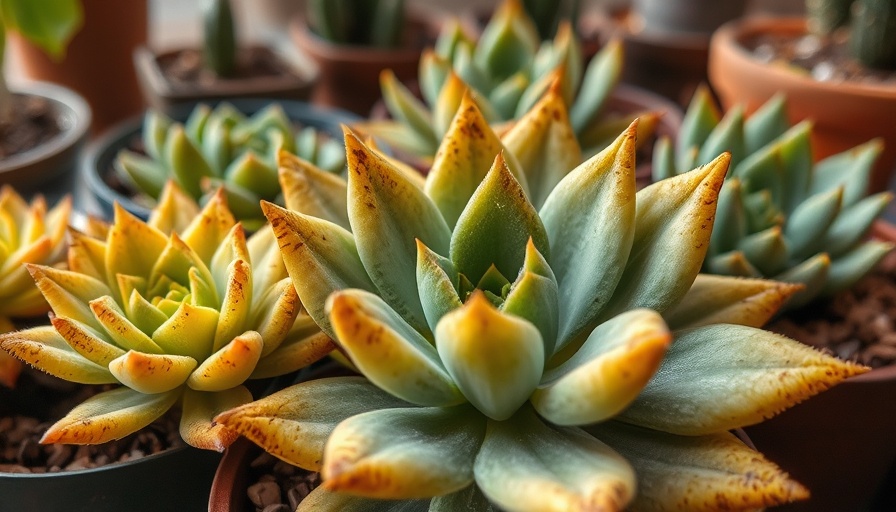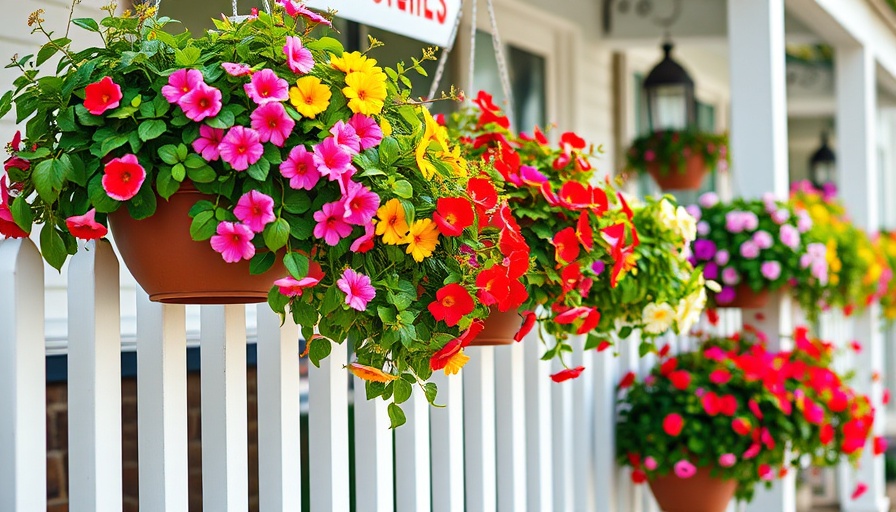
Discover the Best Drought Tolerant Plants for Your Balcony
If you live in Metro Vancouver, you may find yourself yearning for a flourish of greenery on your balcony, even during the dry summer months. For many urban dwellers, time constraints and water availability can make maintaining vibrant plant life quite challenging. Fortunately, drought-tolerant plants not only survive but also thrive with minimal watering, making them perfect for balcony enthusiasts eager to brighten their space without the hefty upkeep.
In '40 Best Drought Tolerant Plants that Grow In Lack of Water,' the discussion dives into the resilience of these unique plants, exploring key insights that sparked deeper analysis on our end.
Embracing Resilient Superstars: Why Drought Tolerant Plants Matter
Picture this: plants that bloom beautifully and bring color to your life, regardless of the scornful summer sun. This is where drought-tolerant species find their place. By tapping into their robust traits, Metro Vancouver gardening lovers can enjoy a stunning garden without the constant worry of watering schedules. Plants like agave, known for its striking architecture, and the charming jade plant that retains moisture in its plump leaves, are simply ideal for busy lifestyles.
Top Picks to Enhance Your Balcony Oasis
When selecting plants for your balcony, consider a range of colors, sizes, and textures that will not only beautify the space but also entice pollinators such as butterflies and bees. Here are five standout drought-tolerant plants:
1. Desert Rose – This succulent boasts thick water-storing stems and vibrant blooms that bloom with little effort.
2. California Poppy – An iconic wildflower thriving in full sun and poor soil, bringing a cheerful carpet of orange and gold.
3. Lavender – Not just for its delightful fragrance; it’s also drought-resistant, making it a must-have for patios.
4. Cacti – The quintessential low-maintenance plant; its vibrant forms will add a unique flair to your balcony.
5. Pride of Madeira – With its towering flower spikes, this plant can withstand heat and need little watering.
Creating a Lasting Impression in Urban Settings
Incorporating drought-tolerant plants into your balcony space offers numerous benefits beyond aesthetics. These plants are often better suited to urban environments, where soil quality may be less than ideal. By choosing species like the rock soap wort or sage, which require minimal maintenance and tolerate poor drainage, you can foster a thriving ecosystem that promotes biodiversity.
Actionable Tips for Balcony Gardening Bliss
When setting up your urban garden, here are some tips to keep in mind:
- Plan Your Layout: Arrange plants according to their sunlight requirements—those needing full sun should be placed where they can soak up the rays.
- Choose Suitable Containers: Make sure pots have good drainage to prevent waterlogging.
- Use Mulch: Mulching around plants can help retain soil moisture, keeping them hydrated longer.
Utilizing these drought-tolerant plants will allow you to cultivate a balcony oasis that thrives, even in dry conditions. You’ll contribute to a greener inner-city environment while enjoying the vibrancy these lively plants bring to your outdoor living space!
As you embark on this journey to create your urban garden landscape, remember to explore resources on plant care and maintenance. There’s always something new to learn that can enhance your gardening experience. With the right choices, your balcony can transform into a lush, inviting retreat regardless of the weather!
 Add Row
Add Row  Add
Add 




 Add Row
Add Row  Add
Add 

Write A Comment